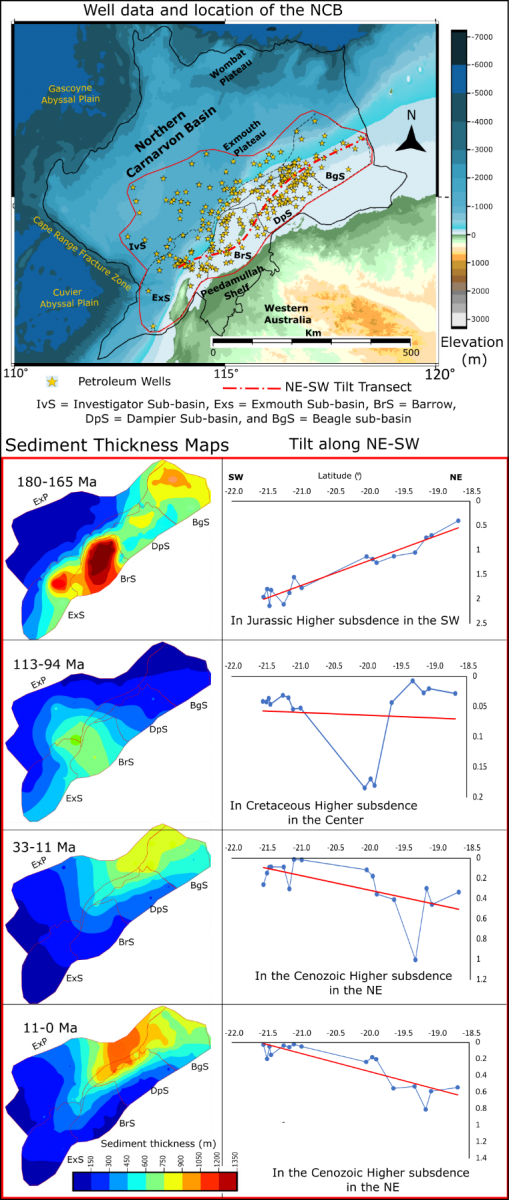The next NSW technical meeting will be held on Wednesday 16th June (apologies for the short notice), we will also be livestreaming on zoom and it will be uploaded to ASEG's YouTube channel later. Please see details below:
Presenter: Dr Stuart Clark (UNSW) and Patrick Makuluni (UNSW)
Topic: Tilting of the Australian Continent: New Evidence from the Subsidence and Deposition History of the Northern Carnarvon Basin
Time: 5:30 for 6pm start
Address: Level 2, Club York (99 York St, Sydney. Room 'York 2')
Zoom registration: https://us02web.zoom.us/webinar/register/WN_Qf8x55wZT2SSUPOi3nBYuQ
Meeting registration: https://www.surveymonkey.com/r/YBRXQND by Tuesday 15th June - due to COVID restrictions we require a registration for in-person meetings, see the attached document for Club York's COVID statement. If you have trouble registering please email nswsecretary@aseg.org.au
Summary:
Studies of the global sea-level changes, plate kinematics, marine inundation, and morphology of the continental shelves suggest that the Australian continent has been tilting north eastwards since the Late Cretaceous. Our work investigates the direct impact of this phenomenon and the preceding tectonic events on the evolution of the Northern Carnarvon Basin evolution and its hydrocarbon resources. We use backstripping and decompaction techniques to develop subsidence, sedimentation, and porosity evolution models for the basin, which sits on the axis of the tilt. The goal is to highlight the spatial and temporal variation of subsidence and sedimentation rates, then give insights into the factors that created accommodation space for sediments. Then assess their impacts on the porosity of the Early Cretaceous reservoirs within the basin. The results reveal a north-eastward shift of subsidence and sedimentation rates from the Early Jurassic to the present in the region. In the Early Jurassic to Early Cretaceous, this variation was caused by the Palaeozoic-Mesozoic rifting events that produced higher tectonic subsidence (~3km) and higher sediment supply in the southwestern Exmouth and Barrow sub-basins, with reducing intensity in the northeastern direction towards Dampier and Beagle Sub-basin. From cretaceous to the present, subsidence and sediment distribution were impacted by the dynamic topography and the northeastwards tilting of the Australian continent. Subsidence along the NE-SW transect and the porosity evolution model results also demonstrate the tilting occurring in these sub-basins.

